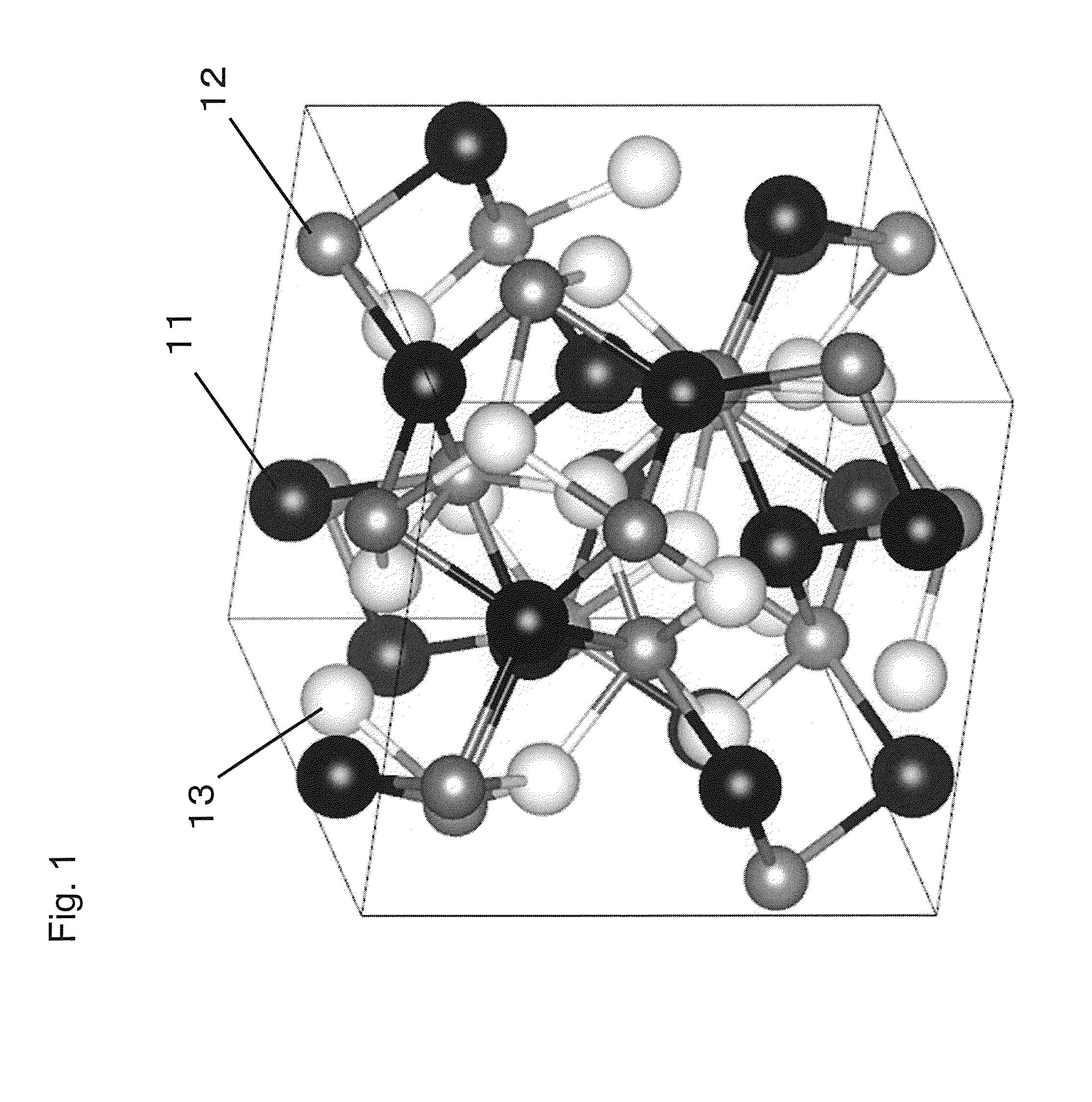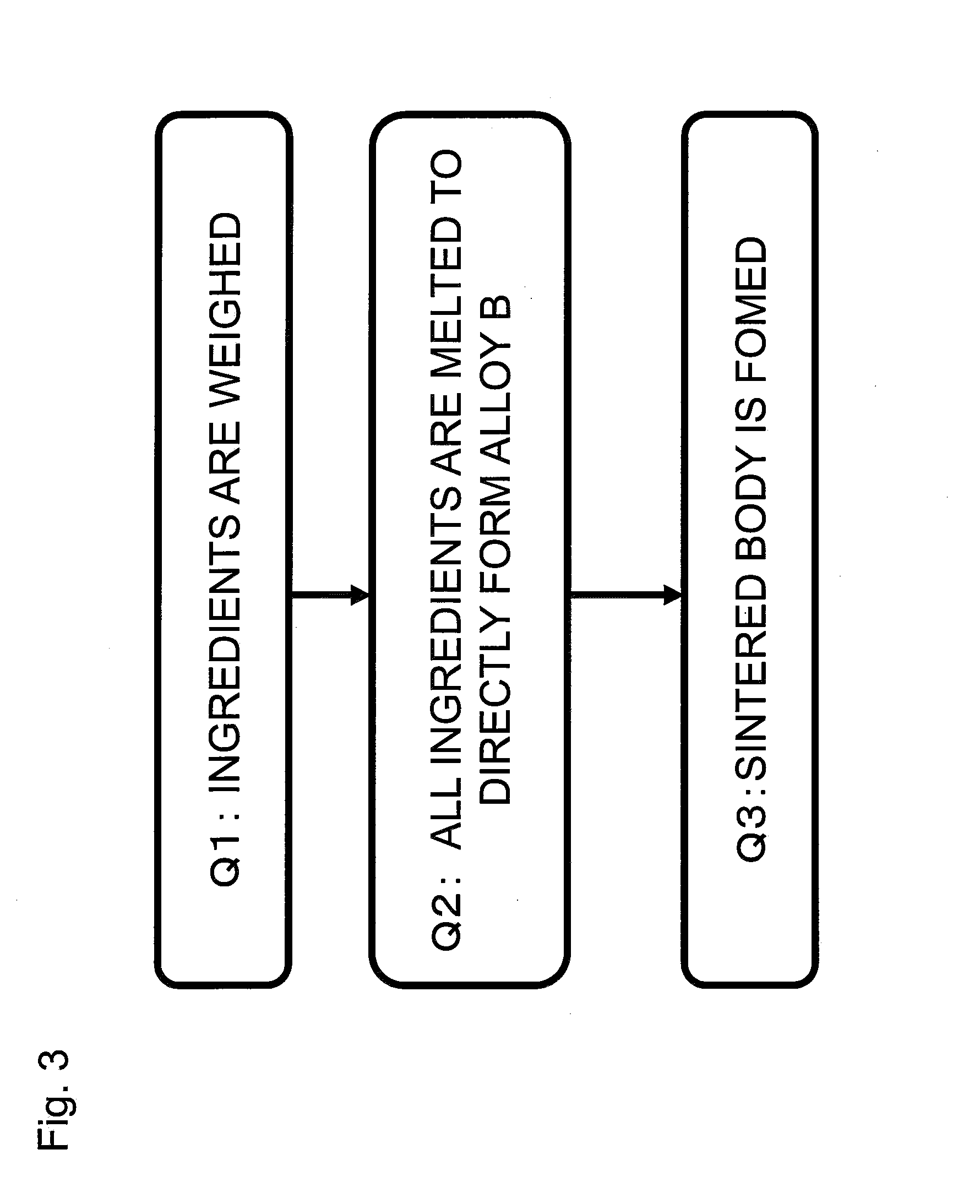Method of manufacturing thermoelectric conversion material
a manufacturing method and thermoelectric technology, applied in the direction of electric furnaces, furnace types, furnaces, etc., can solve the problems of low seebeck coefficient s, inability to form uniform crystals, and conventional manufacturing methods, and achieve the effect of high seebeck coefficien
- Summary
- Abstract
- Description
- Claims
- Application Information
AI Technical Summary
Benefits of technology
Problems solved by technology
Method used
Image
Examples
first embodiment
[0034]Description will be made of a method of manufacturing the thermoelectric conversion material X3T3Z4 (X is composed of one or more elements selected from Zr, Hf, Y, La, Nb, and Ta, while including at least Zr or Hf; T is composed of one or more elements selected from Ni, Co, Cu, Rh, Pd, Ir, and Pt, while including at least Ni; Z is composed of one or more elements selected from Sb, Ge, and Sn, while including at least Sb) according to a first embodiment of this disclosure. The compound X3T3Z4 is a thermoelectric conversion material and has symmetry of a cubic crystal belonging to a space group I-43d. FIG. 1 is a schematic of a crystal structure of the thermoelectric conversion material X3T3Z4. As depicted in FIG. 1, the thermoelectric conversion material X3T3Z4 has the crystal structure in which atoms are arranged at a ratio of X:T:Z=3:3:4 in a unit cell.
[0035]FIG. 2 is a flowchart of processes of the method of manufacturing a thermoelectric conversion material according to the...
example 1
[0040]A sintered body was formed by the manufacturing method described in the first embodiment from the compound X3T3Z4 (X is composed of one or more elements selected from Zr, Hf, Y, La, Nb, and Ta, while including at least Zr or Hf; T is composed of one or more elements selected from Ni, Co, Cu, Rh, Pd, Ir, and Pt, while including at least Ni; Z is composed of one or more elements selected from Sb, Ge, and Sn, while including at least Sb).
[0041]A specific manufacturing method will first be described.
[0042](a) Zr, Hf, Y, La, Nb, Ta, Ni, Co, Cu, Rh, Pd, Ir, Pt, Sn, Ge, and Sb used as ingredients were weighed to a stoichiometric ratio of Zr+Hf+Y+La+Nb+Ta:Ni+Co+Cu+Rh+Pd+Ir+Pt:Ge+Sn+Sb=3:3:4 (process P1). A composition ratio estimated from the weighed ingredients is referred to as preparation composition.
[0043](b) Among the weighed ingredients, the ingredients except Sb (materials containing desired elements selected from Zr, Hf, Y, La, Nb, Ta, Ni, Co, Cu, Rh, Pd, Ir, Pt, Ge, and Sn) w...
PUM
| Property | Measurement | Unit |
|---|---|---|
| temperature | aaaaa | aaaaa |
| temperature | aaaaa | aaaaa |
| inner diameter | aaaaa | aaaaa |
Abstract
Description
Claims
Application Information
 Login to View More
Login to View More - R&D
- Intellectual Property
- Life Sciences
- Materials
- Tech Scout
- Unparalleled Data Quality
- Higher Quality Content
- 60% Fewer Hallucinations
Browse by: Latest US Patents, China's latest patents, Technical Efficacy Thesaurus, Application Domain, Technology Topic, Popular Technical Reports.
© 2025 PatSnap. All rights reserved.Legal|Privacy policy|Modern Slavery Act Transparency Statement|Sitemap|About US| Contact US: help@patsnap.com



